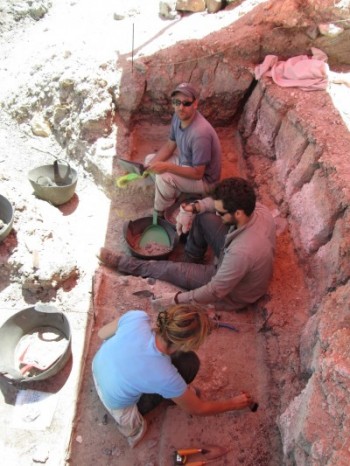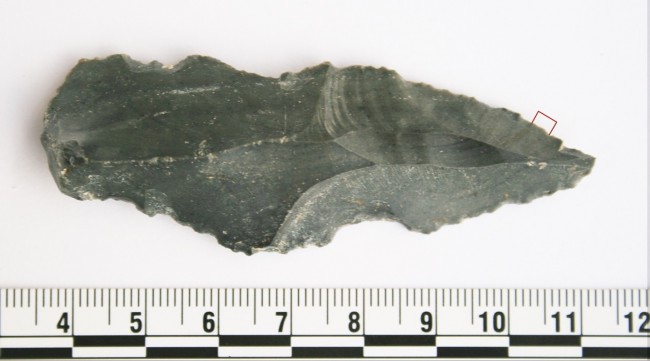Oldest Protein Residue Found on Stone tools; Pokines Analyzing Bones from Site
How smart were human-like species of the Stone Age? A new paper on this topic, “Middle Pleistocene subsistence in the Azraq Oasis, Jordan: Protein residues and other proxies,” will appear in the September 2016 issue of the Journal of Archaeological Science. This research reveals surprisingly sophisticated adaptations by early humans living 250,000 years ago in a desert oasis near Azraq, Jordan.
A team that includes James Pokines, PhD, assistant professor, Anatomy and Neurobiology, together with colleagues from University of Victoria, Canada, including April Nowell and others in the U.S. and Jordan, have found the oldest evidence of protein residue—the residual remains of butchered animals including horse, rhinoceros, wild cattle and duck—on stone tools. The discovery draws startling conclusions about how these early humans subsisted in a very demanding habitat, thousands of years before modern Homo sapiens first evolved in Africa.

The team excavated 10,000 stone tools over three years from the site of Shishan Marsh 1, an open-air site at the former shoreline of the wetlands, remnant of which is now contained within the protected Azraq Wetland Reserve. The tools were found in association with multiple large faunal species identified by Pokines, including rhinoceros, elephant, wild horse and their smaller relatives, wild camels, gazelle, wild cattle, and large carnivores that likely included lion.
The team closely examined 7,000 of these stone tools, including scrapers, flakes, projectile points and hand axes (commonly known as the “Swiss army knife” of the Paleolithic period), with 44 subsequently selected as candidates for testing. Of this sample, 17 tools tested positive for protein residue, i.e., blood and other animal tissues.
The diversity of animal residue found suggests that these early humans were adaptable, opportunistic and capable of exploiting a range of fauna, critical to survival in an extremely challenging environment. In addition, this technique detected the presence of animals such as waterfowl that have not been identified yet at the archeological site and offers direct proof that these human ancestors were exploiting and butchering these species along the wetland margins.

Pokines is currently analyzing all of the bone from the Shishan Marsh excavations. He believes the application of this technique may extend to other Stone Age sites throughout the world, and the temporal limit may extend further into the past. “This may illuminate the origins of hunting behavior as well as the evolution of technology.”
Submitted by Jonathan Dashkoff, MD, PhD.